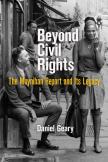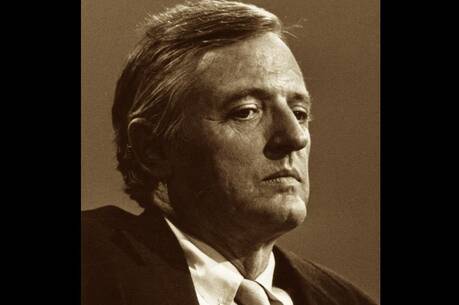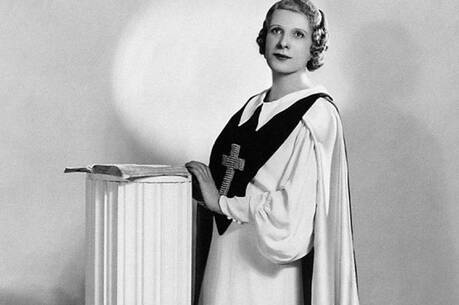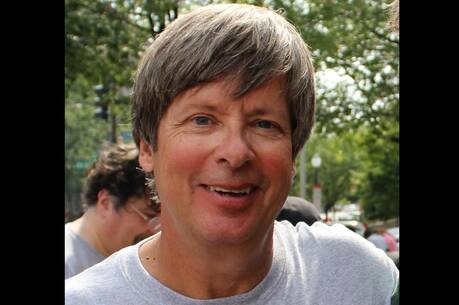Healing the Soul of America
Daniel Patrick Moynihan (1927–2003) makes Horatio Alger seem like a Rockefeller heir. After growing up in New York City’s then notorious Hell’s Kitchen neighborhood of Irish poverty and shining shoes in Times Square, he went on to serve in the administrations of two Democratic and two Republican presidents, served as ambassador to India and then to the United Nations, represented New York in the Senate (from 1977 until his death), wrote 18 books, nine of them as a senator; and in the lapses between his presidential duties (in the Department of Labor for Kennedy and then Johnson, in Urban Affairs for Nixon), he headed Harvard University’s Joint Center for Urban Studies.
But his fame—and disfame—rests on “The Negro Family: The Case for National Action” published in March 1965 by the U.S. Department of Labor’s Office of Policy Planning and Research. Quickly shortened to “The Moynihan Report,” the 78-page report, of which 30 pages are footnotes, was marked “for official use only.” Moynihan’s 1970 memo to President Nixon on race relations, with the almost immediately infamous phrase “benign neglect,” was interpreted, like the report itself, in ways directly contrary to Moynihan’s intent.
His intent in the Department of Labor report was to persuasively shake Americans from any complacency that two centuries of chattel slavery could be remedied solely by the passage of civil rights equal opportunity laws, and his “benign neglect” advised focusing not on the riots occurring in major American ghettoes but on helping blacks as the disproportionate number of all the American poor. How could an intelligent and well-meaning scholar-politician generate these aim-distorting misunderstandings? Part of the translation problem was that he seldom let his Harvard intellect slow his Irish tongue. Another was that his social science data-driven approach impelled him to acknowledge all the relevant data, making his publications a Rorschach test for antagonists to select what best suited their punditry.
Last and certainly not least, his emphasis on traditional family stability as the core of social stability was being abandoned by his liberal colleagues almost as he wrote. His aims, the nascent culture war distortions and, above all, his subject matter—that social stability based not on fear or resignation but on human dignity required substantive justice, not merely the formal justice of civil rights—remain hugely pertinent today.
As I write, the September 2015 issue of The Atlantic features an article by the National Book Award winner Ta-Nehisi Coates on the Moynihan Report’s 50th anniversary and its renaissance that is even longer than Moynihan’s original. As Daniel Geary makes clear in his book Beyond Civil Rights, every magazine (including America), newspaper, public intellectual and social science scholarly journal gave the Moynihan Report a prominent and an ongoing attention that has never entirely faded. As the report dealt with America’s original sin, slavery, and its ongoing impact on our conflicting and intertwined notions of freedom and equality and the role of government, Moynihan attempted to write in a pragmatic mode about the soul of America and its healing.
Daniel Geary, who teaches U.S. history at Trinity College Dublin and has written on C. Wright Mills, writes neither to bury nor resurrect the Moynihan Report. Geary tells us that his book diverges from prevailing accounts of the Moynihan Report controversy, which focus on establishing Moynihan’s intended meaning, by concentrating on why and how the report became a powerful symbol for a surprising range of groups, including liberal intellectuals, Southern segregationists, civil rights leaders, black power advocates, feminists, neoconservatives and Reaganite conservatives.
His thesis is that the report’s ambiguities and inconsistencies gave it its enduring salience. Was family instability primarily a cause or a consequence of racial inequality? Were the “social pathologies” of African-Americans race-specific, rooted in the history of slavery and racial discrimination, or were they class-specific, based on the over-concentration of African-Americans among the urban poor? Was the patriarchal family structure naturally superior, or did racial minorities simply have to conform to mainstream nuclear family norms for mainstream acceptance?
At the time, 23 percent of urban nonwhite marriages were dissolved through divorce or absent fathers versus only 8 percent of urban white marriages, with 24 percent of black babies born out of wedlock versus 3 percent of whites. Double the black statistics and make the white stats match the 1964 black stats, and you have today’s data. “Less than half of all Negro children,” Moynihan reported, “reach the age of 18 having lived their lives with both of their parents.” A review in The New York Times last October (10/22/15) reports that black boys are more likely than girls to underperform in school and engage in drug and violent behavior. Without mentioning Moynihan, they summarized the current data as suggesting that “impoverished households are more likely to be led by single mothers, and boys suffer from a lack of male role models.”
In his highly detailed investigation on the impact of the Moynihan Report, Geary searched all the pertinent archival collections and cites every article dealing with Moynihan ever written in the leading social scientific, black American and prominent liberal, progressive and conservative magazines and Moynihan archives, many of them in previously unused sources, and interviewed key surviving participants. He seems never to have thrown a file card away.
The style of his middle research chapters is heavy going, repetitious but not turgid. Geary writes that an analysis of the contradictions and flaws in the arguments on all sides reveals the debate’s complexity and results in a history without heroes or villains and with lessons for the present. His conclusion sides with Moynihan’s critics but is mostly a critique of the prevailing liberalism which, despite its shifting, still inadequately grasps that our society overwhelmingly favors the wealthy and powerful at the expense of most Americans, especially the poor and working class. For Geary, the family-centered focus of the Moynihan report was insufficiently radical.
But Geary the writer omits a key dimension of Moynihan the public intellectual. Moynihan wanted not simply to criticize Americans but to prod voters. His key thesis was that for the majority of blacks, civil rights legislation was only a dimly lit corridor to the light of full dignity. They needed jobs and wages—a family wage—and the only way to achieve this was to persuade more comfortable Americans to move beyond their entrenched individualism towards a greater solidarity which Moynihan hoped to arouse by focusing on the family and what all families need to bring up their children in authentic hope.
Geary explicitly notes the influence of Moynihan’s Catholicism on his thinking. He attended Catholic schools as a boy, had strong ties to Catholic social welfare organizations and served on the board of the National Catholic Social Action Conference, delivering the keynote address at its 1964 meeting. He writes that Catholic social teaching provided Moynihan with a moral vocabulary to attack economic inequality. But in his conclusion, Geary simply pronounces the need for a more radically egalitarian society and provides nary a hint about any pragmatically oriented moral vocabulary. America’s more demanding readers will look beyond the present era’s “culture wars” to their own critically evolving tradition for the relationship between national and international solidarity and how they affect families. They might well conclude that not only was the Moynihan Report “insufficiently radical” but also “insufficiently Catholic” and that the two terms, properly understood, belong closer together.
This article also appeared in print, under the headline “Healing the Soul of America,” in the January 4-11, 2016, issue.








